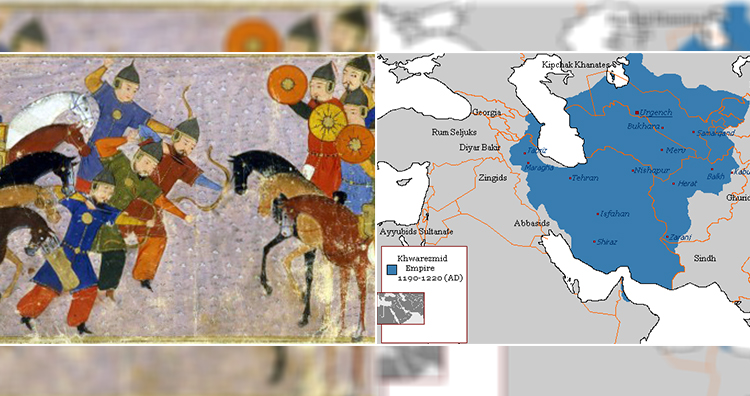Who is Muhammad II of Khwarazm, the ruler who started the destruction process of the Khwarazmshah state?
It was not possible to escape and get rid of Genghis Khan.

( ? -1220) The ruler of the Khwarazmshahs State. The state entered the process of collapse during his reign. He is the son of Alaeddin Tekiş Harezmşah. The date of birth is not known accurately. He ascended the throne in 1200 upon the death of his father. While it was known as Kutbeddin before, he took the name Alaeddin after he ascended the throne.
Ala ad-Din Muhammad II (full name: Ala ad-Dunya wa ad-Din Abul-Fath Muhammad Sanjar ibn Tekish) was the Shah of the Khwarazmian Empire from 1200 to 1220. His ancestor was Anushtegin Gharchai, a Turkic Ghulam who eventually became a viceroy of a small province named Khwarizm. He is perhaps best known for inciting the Mongol conquest of the Khwarazmian Empire, which resulted in the utter destruction of his empire.
The first years of his reign were spent in a struggle with the members of the dynasty and the Ghurlus. Gur sultans, who easily captured Nishapur after capturing the cities of Merv and Tus, captured Alaeddin's brother Taceddin Alişah and the emirs and sent them to Gur. They gave the administration of Merv and Serahs provinces to Hinduhan, son of Nasıreddin Melikşah. The Ghurlus wanted to take Khorasan from the Khwarazmshahs. Quickly marching to Nishapur, Alaeddin took back Merv and Serahs and destroyed their castles. He forced the Ghurlus to return to their country. Hinduhan had to take refuge with the Gurians.
Alaeddin wanted to seize Herat by taking advantage of the struggle that started within the dynasty after the death of Gur Sultan Gıyaseddin. When he could not get any result from this, he plundered the Badgis area and came to Merv (1204). When he heard that Gıyaseddin's brother Şihabeddin had come to Harezm with a strong army, he quickly returned there. In a short time, he gathered strength from the environment and asked the Karahitays for help. By obeying the defense rules of the Khwarezmites, he flooded the area. However, he was defeated by the Gurlus in Karasu. When the Karahitay army and the troops of Sultan Osman, one of the Samarkand Karakhanids, came to help Alaeddin, the Gurians retreated. Alaeddin followed the Gurlus and dealt a heavy blow to the right arm of their armies. Shihabeddih escaped with difficulty.
The Khwarazmian or Khwarezmian Empire was a culturally Persianate, Sunni Muslim empire of Turkic mamluk origin, that ruled large parts of present-day Central Asia, Afghanistan, and Iran in the approximate period of 1077 to 1231, first as vassals of the Seljuk Empire and the Qara Khitai (Western Liao dynasty), and from circa 1190 as independent rulers, up until the Mongol conquest in 1219–1221.
Alaeddin, who was constantly paying taxes to the Karahitays, embarked on the Transoxiana expedition to get rid of taxes and to break the influence of this state. The war resulted in the defeat of the Karahitays and the capture of Bukhara. After this victory, Alaeddin took the names Iskenderi Sani and Sancar.
In his campaign against Iran in 1217, he defeated Persian Atabei Sad b Zengi and Azerbaijani Atabey Uzbek. Alaeddin was suspicious of the Mongols, who were getting stronger. He sent ambassadors to Genghis Khan to get information about him. In return, Genghis Khan sent a committee and made a peace and trade agreement with the Khwarezmshahs.
After the treaty, a trade caravan that came to Alaeddin's country was accused of espionage in Otrar by the governor of the city, İnalcık, and their goods were confiscated. Traders and caravans were killed. One of them escaped and reported the incident to Genghis Khan. Genghis sent a committee to Alaeddin, demanding that İnalcık be delivered and the damage paid. When Alaeddin refused this request, Genghis Khan, who was already looking for an opportunity, attempted to invade the country of the Khwarezmshahs. Hundreds of thousands of people were killed, and many cities were burned and destroyed. Fleeing from Genghis, Alaeddin died in 1220 on the island of Abeskun, near the southeast coast of the Caspian Sea.
